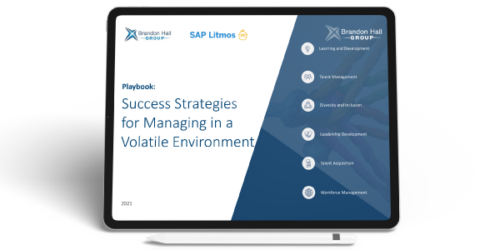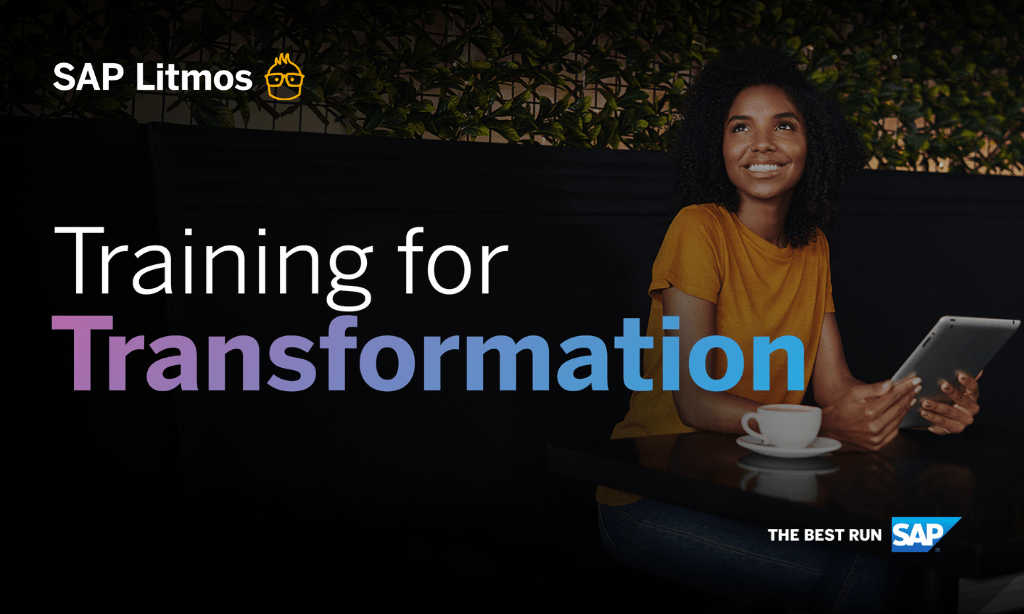5 Success Strategies for Managing in a Volatile Environment

- What impact will COVID variants have on the return to the workplace?
- How do we manage a hybrid workforce?
- What will the new normal look like?
But maybe we are already living in the new normal — an environment of volatility, uncertainty, complexity, and ambiguity (VUCA) that requires continuous innovation and agility from the very top of the organization to the most junior employee.
The complexities of driving business success in this environment cannot be overstated. Employees will be more dispersed than before the pandemic, facing an uncertain future, requiring new or more advanced skills, and needing to be agile and flexible in how they learn and work.
At first glance, it appears to be an impossible task. Yet many organizations have seen levels of engagement rise and leaders demonstrate new levels of kindness, empathy, compassion and resilience in the face of massive disruption.

Here are some highlights:
1. Ensure Alignment Between HR and Business Leadership
More than ever before, HR must be a strategic partner with the business for organizations to successfully navigate the volatile environment. HR must be a partner in every aspect of an organization’s recovery plan, and HR must reflect the organization’s business priorities in everything it does.
2. Practice Transparency and Inclusive Leadership
In scores of interviews, employers that rate their level of employee engagement highly during the pandemic have two behaviors in common:
- Top leaders communicate regularly and honestly about the state of the organization and what they were doing to manage disruption. Their transparency often inspired trust.
- Employers sought the opinions and involvement of employees to help solve their challenges.
The challenge now is to translate that transparency and inclusion from a crisis behavior to a norm.
3. Embrace Employee Development
This goes well beyond offering learning courses. The most effective employee development occurs when career development, learning, and performance goals are aligned.
Organizations are focused on upskilling and reskilling and express frustration about employees’ lack of engagement with the learning. There are two main reasons:
- The lack of personalized learning tied to employees’ learning styles
- Learners don’t see what’s in it for them
Employees must be able to see how development opportunities will help them meet their personal and professional aspirations while meeting the needs of the business.
4. Foster Employee Wellness
Organizations must recognize that wellness goes beyond employees being and feeling healthy and safe, which has been the chief focus during the pandemic. It should encompass:
- Life-work integration: This includes enabling a flexible work schedule when the job allows it and creating some level of separation — or boundaries — between work and the rest of employees’ lives. Life-work integration is critical in guarding against employee burnout.
- Financial health: Many employees and their families suffered financial hardships during the pandemic, including loss of employment or a spouse having to quit work to handle daycare and home-schooling responsibilities. It’s important that employers provide services for employees to receive financial advice.
- Mental health: Organizations should be sensitive to the stress and anxiety ongoing change causes and recognize employees regularly for their meaningful contributions. Even when employees struggle, it’s important to recognize effort and improvement. Also, many companies are now offering training on various topics related to mental and physical health and wellbeing.
- Sense of belonging: Employees want to feel a strong connection to the organization they work for. There are many elements to creating a sense of belonging, including feeling that managers are invested in their success and feeling empowered to connect with peers across the organization.
5. Make Change Management Part of Everything You Do
When we ask employers about the most important aspects of human capital management — or human experience management (HXM) as our friends here at Litmos would say — change management ranks at or near the top. When we ask them about the effectiveness of change management, it ranks at or near the bottom. That’s because most managers act before understanding the impact change will have on employees and fail to proactively prepare them for change and guide them through it.
The playbook offers more insights and guidance on how to use these strategies to help your teams navigate disruption and change so that they and your organization experience success.




